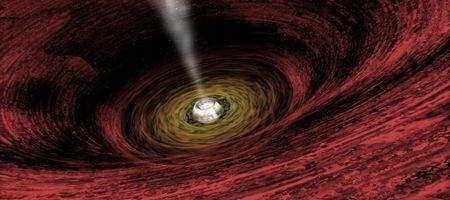In an X-ray image looking further into the past than ever before, NASA astronomers have discovered that massive black holes were common in the early universe and grew much more aggressively than previously thought.

By combining Chandra images with optical and infrared images from the Hubble Space Telescope, astronomers were able to search for black holes in 200 distant galaxies, at a period when the universe was between about 800 million to 950 million years old.
“Until now, we had no idea what the black holes in these early galaxies were doing, or if they even existed,” says Ezequiel Treister of the University of Hawaii. “Now we know they are there, and they are growing like gangbusters.”
The observations found that at least 30 percent – and possibly all – of the galaxies contained growing supermassive black holes. This implies that there are at least 30 million supermassive black holes in the early universe.
“It appears we’ve found a whole new population of baby black holes,” says co-author Kevin Schawinski of Yale University. “We think these babies will grow by a factor of about a hundred or a thousand, eventually becoming like the giant black holes we see today almost 13 billion years later.”
Young black holes in the early universe had been predicted, but never before observed. And the new data indicates that black hole growth is about a hundred times higher than recent estimates.
Although it had been observed that black holes and galaxies at closer distances grow in parallel, the new results show this connection starts earlier than previously thought – maybe right from the start.
“Most astronomers think in the present-day universe, black holes and galaxies are somehow symbiotic in how they grow,” said Priya Natarajan, a co-author from Yale University. “We have shown that this codependent relationship has existed from very early times.”
It had been suggested that early black holes would play an important role in clearing away the cosmic ‘fog’ of uncharged hydrogen that pervaded the early universe when temperatures cooled down after the Big Bang.
However, the Chandra study shows that blankets of dust and gas stop ultraviolet radiation generated by the black holes from traveling outwards to perform this reionization. This means stars, and not growing black holes, are likely to have cleared this early fog.






